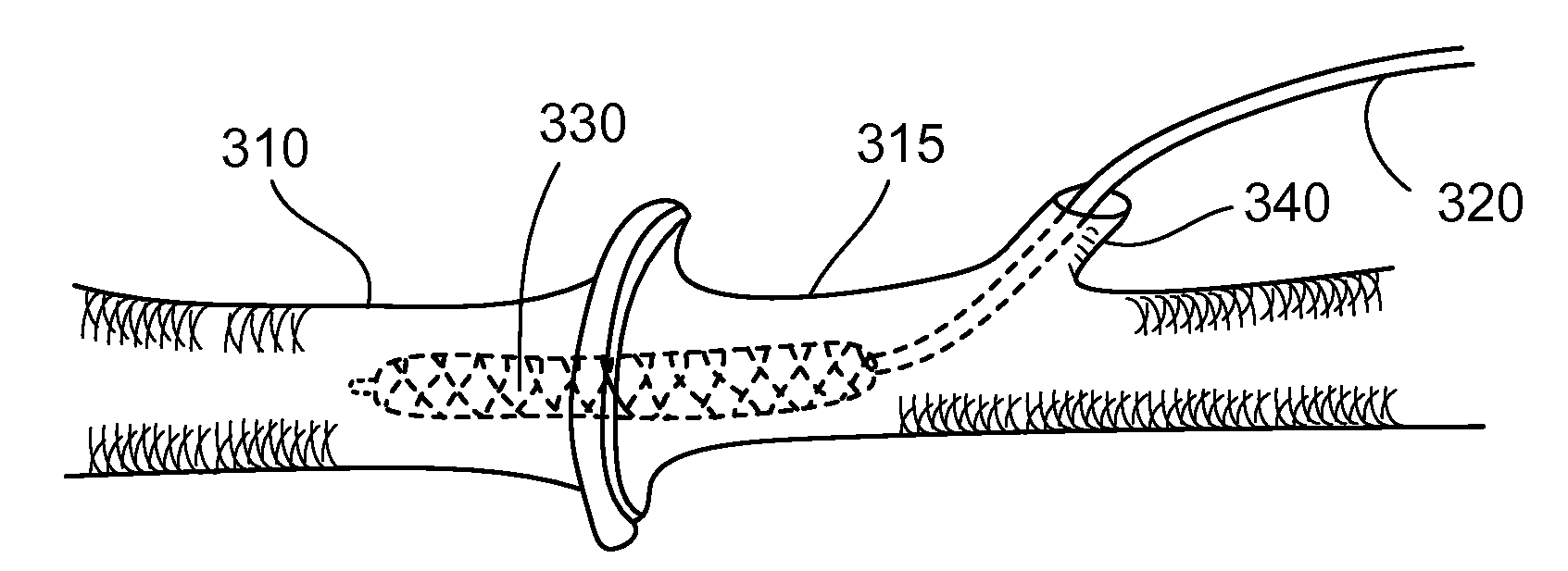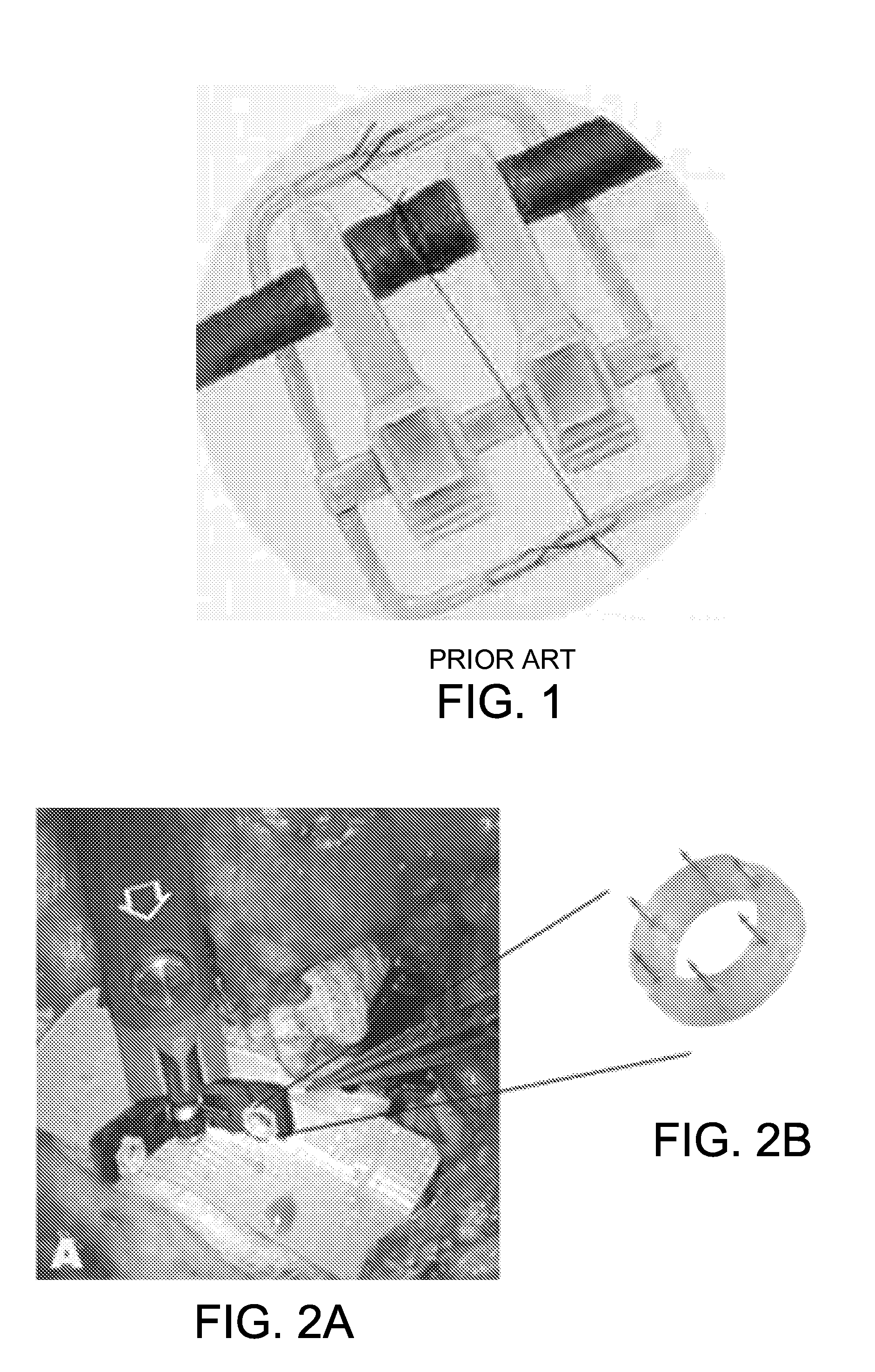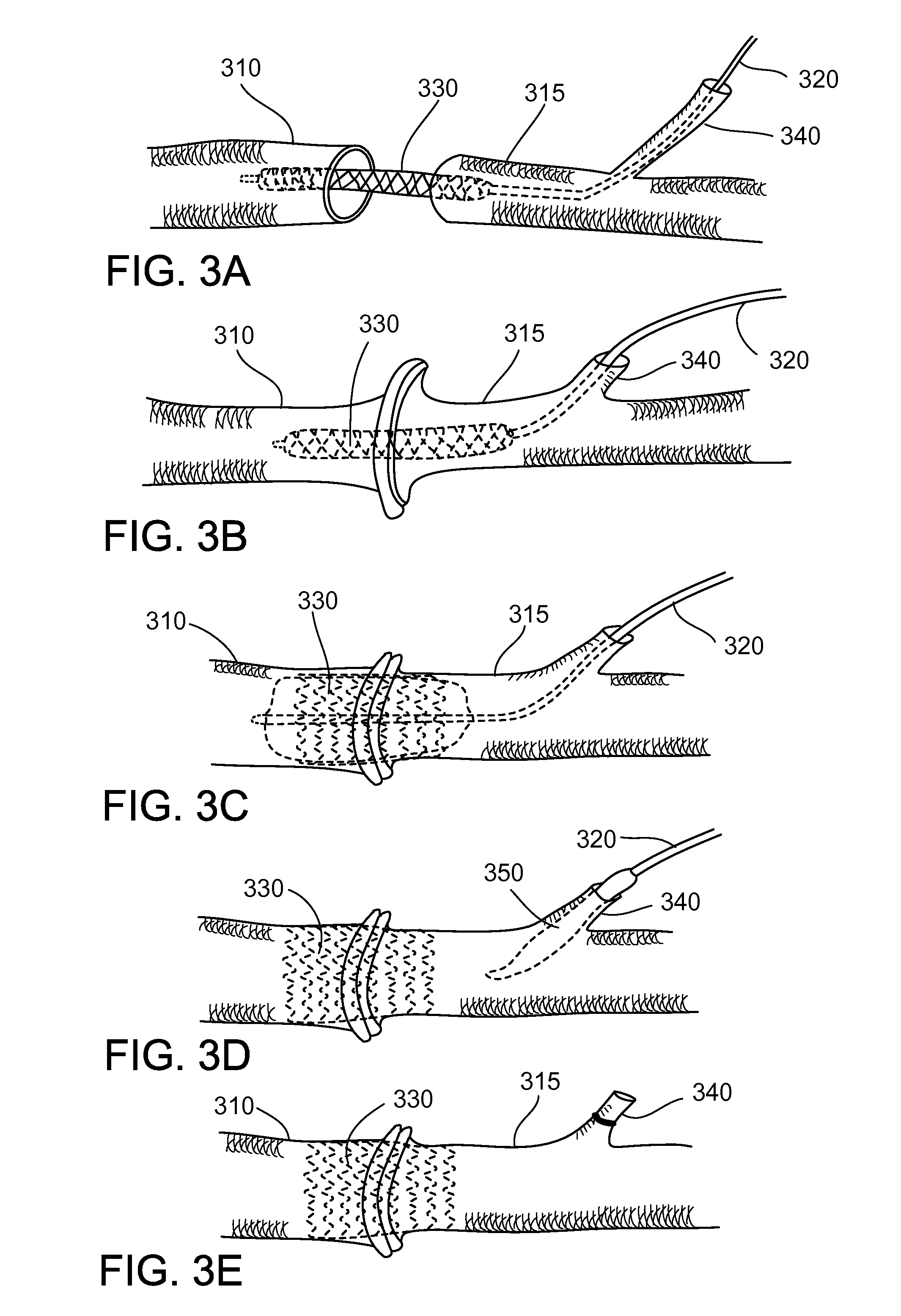Method and Apparatus for Vascular Anastomosis
a technology of vascular anastomosis and vascular endoscopy, which is applied in the field of methods and apparatus for vascular anastomosis, can solve the problems of microsurgical procedures that are time and resource-consuming, prone to complications, and local thrombosis, and achieve the effects of facilitating the stent stent securing or affixing, inhibiting or preventing the movement of the stent, and facilitating the maintenance of the vessel
- Summary
- Abstract
- Description
- Claims
- Application Information
AI Technical Summary
Benefits of technology
Problems solved by technology
Method used
Image
Examples
Embodiment Construction
[0031]An exemplary method and apparatus for performing an anastomosis are shown in FIGS. 3A-3E. In FIG. 3A, the ends of two vessels 310, 315 to be joined are shown. A catheter 320 or other device that includes a balloon-deployable stent 330 is introduced through a side branch 340, such that the stent 330 passes through both vessel ends. The ends of the vessels 310, 315 are then coapted against each other over the unexpanded stent 330, as shown in FIG. 3B. The stent 330 is then expanded, as shown in FIG. 3C, and the catheter 320 with the deflated balloon apparatus 350 can then be withdrawn through the sidebranch 340, as shown in FIG. 3D. FIG. 3E shows the side branch 340 being sealed off after the catheter 320 and the balloon 350 are withdrawn.
[0032]A typical microvascular vessel 310, 315 that can require anastomosis during microsurgical procedures can have an outer diameter between about 1 mm and 4 mm. The expanded diameter or size of the stent 330 can be slightly larger than the di...
PUM
 Login to View More
Login to View More Abstract
Description
Claims
Application Information
 Login to View More
Login to View More - R&D
- Intellectual Property
- Life Sciences
- Materials
- Tech Scout
- Unparalleled Data Quality
- Higher Quality Content
- 60% Fewer Hallucinations
Browse by: Latest US Patents, China's latest patents, Technical Efficacy Thesaurus, Application Domain, Technology Topic, Popular Technical Reports.
© 2025 PatSnap. All rights reserved.Legal|Privacy policy|Modern Slavery Act Transparency Statement|Sitemap|About US| Contact US: help@patsnap.com



